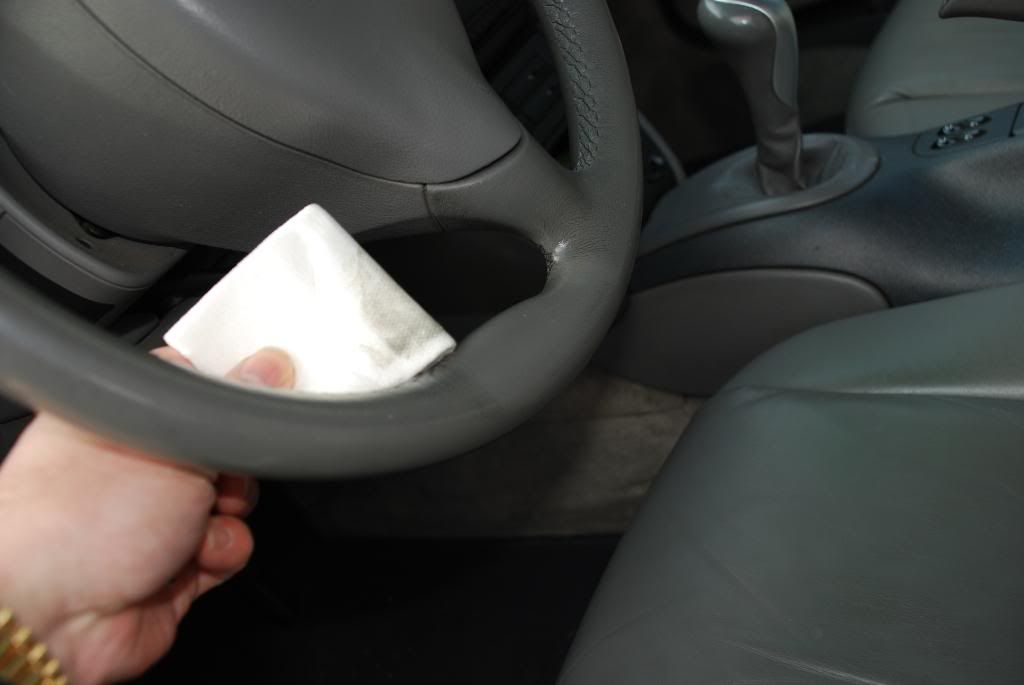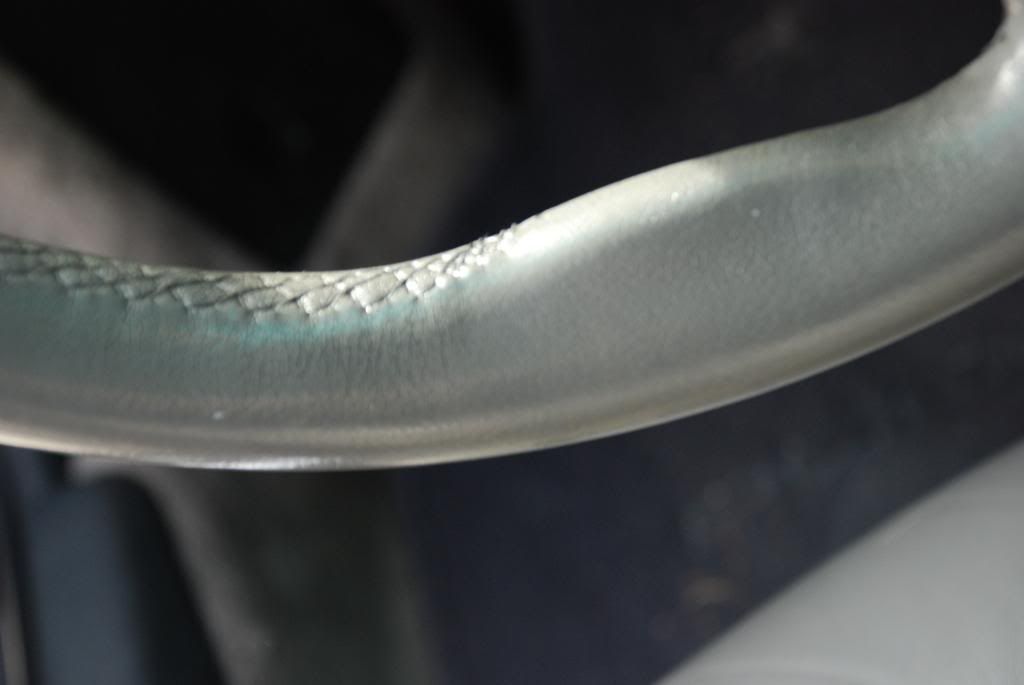outdoorsr said:
Hello,
I am looking for a leather care treatment for an 08 Porsche Cayman S. See link with several photos of the leather.
Picasa Web Albums - Dreamer - Porsche Cayman S
Cheers,
Gary
This is what being observed from the three pictures.
Picture #1
1] Perforated central panels.
2] Creases
3] Deep Grain (soiling at the grain top)
Picture #2 and Picture #3 (show close-up).
1] Deep Grain (Soiling at the low grain valley).
The perforation is designed for extra sitting comfort rather than aesthetic.
It breathes through these perforated panels; as such, it had to be treated as absorbent leathers.
It is through these perforations and seams that the original fatliquor evaporated from heat as VOC (Volatile Organic Compound).
When the leather is supple with sufficient fatliquor it produce “fine-breaks� when compressed.
As the fatliquor diminishes it stiffens and the weak creases become “coarse-breaks�; behaves like hinges to the surrounding areas.
Therefore these perforated panels has to be rejuvenated at least on a yearly basis; depending on the interior heat and humidity condition and also from region to region.
Eventually with neglect and abused with non leather-safe (Alkalinity & Alcohol) solution; these holes will crack first when see through a magnifying glass.
These deep grains is best not to use any abrasive material for cleaning as it will have uneven wear to the finish.
The safest tool for cleaning is the natural horsehair brush with terry towel as extraction.
A Maintenance cycle should include a restorative, periodic and routine cleaning.
Restorative Cleaning is recommended; where the leather is strip of all foreign contamination including all aftermarket protector or conditioner to the original topcoat. This can be done with leather prep as the first step follows with leather-safe cleaner and rinse; leather rejuvenating (hydrating and fatliquoring) and non-stick, rub-resistance protection or other equivalent.
Periodic Cleaning may be required approximately every 6 to 12 months depending on the usage and the two front seats may need more attention than the back seat. This can be done with using leather-safe (pH 3-5) cleaner as the first step follows by rinse, hydrating, fatliquoring (always treat perforated panels as absorbent leathers to maintain its structure suppleness) and non-stick, rub-resistance protector or equivalent.
Routine Cleaning may be required approximately every bi-weekly or monthly depending on usage or occasional perspiration stains from body contact.
It’s to use a leather-safe (pH 3-5) rinse to neutralize the perspiration stains and pH balance the leather finish close to that of our skin; prior to the non-stick, rub-resistance protection.
It’s this non-stick, rub-resistance protection or equivalent that keeps the leather out of trouble from sticky soiling, dye-transfer and abrasion.
With this leather-safe (pH 3-5) system in place; we will have beautiful leathers consistently at all times.
To enjoy leather, it has to be hygienic, aesthetic, supple, buttery-feel, reduce squeak and has that unforgettable classic leather scent that charms.
Roger Koh
Leather Doctor®
#1 Shows stripping foreign contamination off the leather; by using leather prep and a horsehair detailing brush.
#2 Shows extract suspended soiling with rag.
#3 Shows result of cleaning and rinsing the leather to a healthy squeak thereafter.



